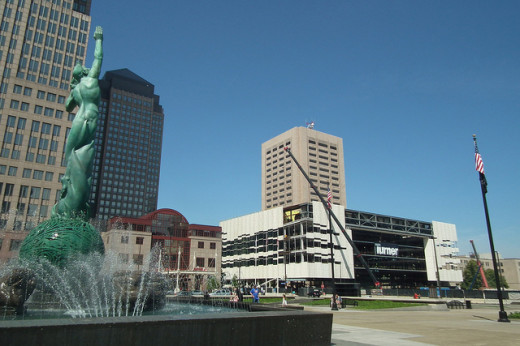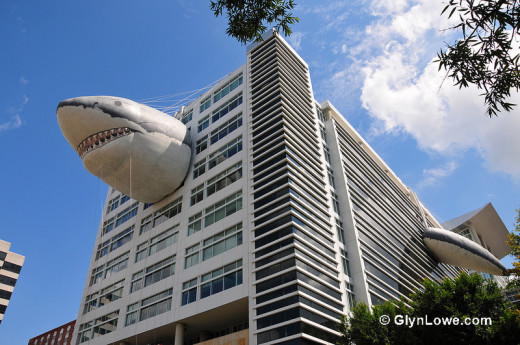Creating a vision for the future begins by inventorying a community’s assets: natural, architectural, human, educational, economic, and so on.
Twenty-first century economic development focuses on what a community has, rather than what it doesn’t have. Too many cities and towns spend all their time and money on business recruitment. They build an industrial park out by the airport and then they try like crazy to attract a plant, factory or distribution center to move there. The few communities that are “successful” at this strategy usually accomplish it by giving away the store.
The old economic development paradigm was about cheap land, cheap gas and cheap labor. It was about shotgun recruitment and low cost positioning. In the old economy, the most important infrastructure investment was roads. Today, successful economic development is about laser recruitment and high value positioning. Today highly trained talent is more important than cheap labor and investing in education is far more valuable than widening the highway.
American communities are littered with projects that were sold as a “silver bullet” solution to a city’s economic woes: the New Jersey State Aquarium in Camden, New Jersey; Vision Land Amusement Park in Birmingham, Alabama; the Galleria Mall in Worcester, Massachusetts; the Winter Garden in Niagara Falls, New York — to name just a few.
Too many communities think that economic revival is about the one big thing. Whether it is a convention center, a casino, a festival marketplace, a sports arena, or an aquarium, city after city has followed the copycat logic of competition. If your city has a big convention center, my city needs an even bigger one. Festival marketplaces worked fine in cities like Boston and Baltimore, but similar projects went bankrupt in Toledo, Richmond, and a dozen other communities.
Successful economic development is rarely about the one big thing. More likely, it is about lots of little things working synergistically together in a plan that makes sense. In her award winning book –The Living City – author, Roberta Brandes Gratz says that “successful cities think small in a big way.”
Two examples of this are Silver Spring, Maryland and Cleveland, Ohio. Cleveland had an aging, undersized convention center. Civic boosters argued for a huge new convention center that could compete with much bigger cities like Chicago, Atlanta, or Minneapolis. But small cities like Cleveland will never win in an arms race to build the biggest convention center. Instead Cleveland took a look at its assets, one of which is the Cleveland Clinic — a world renowned medical center located a short distance from downtown. Instead of trying to compete with every other convention city, Cleveland decided to build a smaller, less expensive meeting facility — the Cleveland Medical Mart and Global Center for Health Innovation — focused on medical conventions and which would have an attached medical mart, affiliated with the Cleveland Clinic.

Another example of asset based economic development is Silver Spring, Maryland. For many years, Silver Spring was among the largest suburban commercial centers in the Mid-Atlantic region. But, by the early 1990’s Silver Spring had fallen on hard times. In 1996, a story in the Economist said “You can see America wilting in downtown Silver Spring. Old office blocks stand empty. A grand art deco theater is frequented only by ghosts. Glitzy department stores have decamped to out-of-town shopping malls. Tattoo parlors, pawnbrokers and discounters remain.”
To combat this decline, local officials and an out of town developer proposed to build a second Mall of America (like the one in Bloomington, Minnesota). The proposed mega-mall would have 800 stores and it would cover 27 acres. The projected cost was $800 million and it would require a $200 million public subsidy. It would also mean the demolition of most of downtown Silver Spring’s existing buildings.
So what happened? The county rejected the massive American Dream Mall and set their sights on a succession of more modest developments. First, they realized that despite its decline, Silver Spring had some important assets that were probably more valuable than a giant mega-mall. First, Silver Spring was adjacent to Washington, DC, the nation’s capital. Second it was served by transit (i.e. the Washington Metro system), and third it was surrounded by stable middle-class neighborhoods.
Rather than spending $200 million subsidizing a giant mall, county and state officials collaborated to find a site for the new headquarters for the Discovery Communications Corp, which was then housed in several different locations around the Washington area.

The site where Discovery Communications decided to build their new headquarters was adjacent to the Silver Spring Metro Station. Bringing 1500 employees to downtown Silver Spring was a huge boost to the community, but what really synergized the renewal was Discovery Corp’s agreement not to build a cafeteria in their new headquarters building. This meant employees would have to patronize local restaurants.
Download all seven parts of The Secrets of Successful Communities in a single pdf file (note: the pdf does not include the several embedded videos)
Editor’s Note: Ed McMahon is one of the country’s most incisive analysts of planning and land use issues and trends. He holds the Charles Fraser Chair on Sustainable Development and is a Senior Resident Fellow at the Urban Land Institute in Washington, DC. McMahon is a frequent speaker at conferences on planning and land development. Over the past 21 years, we’ve been pleased to have published more than two dozen articles by McMahon in the Planning Commissioners Journal, and now on PlannersWeb.com.